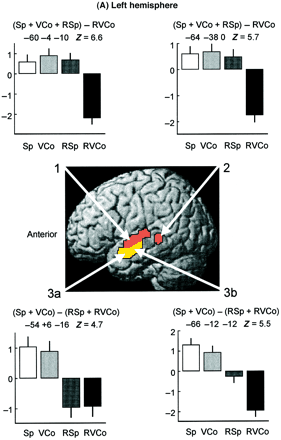Sophie Scott and colleagues tried to identify areas in the brain that might be involved in mapping sound to meaning using a neuroimaging approach. They used speech samples which they either vocoded , so they sounded different but were still comprehensible, or they "rotated" the speech to make it incomprehensible while keeping it "acoustically similar" to normal speech. They then calculated contrasts to work out which areas were more strongly activated by one type of stimulus rather than another. Only the area shown in yellow on the left anterior temporal lobe showed significantly stronger activation by comprehensible when compared to incomprehensible speech samples.

(Sp=speech, VCo=vocoded speech, RSp=rotated speech, RVCo= rotated vocoded speech).
If you are curious how spectrally rotated speech sounds like, listen to the examples below. (My gratitude to Stuart Rosen for letting me have his spectral rotation algorithm, and to George W. Bush for being such an endless fount of utterances which illustrate that the distinction between comprehensible and incomprehensible speech is, well, shall we say "nuanced".)
Original speech
Spectrally rotated speech
